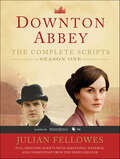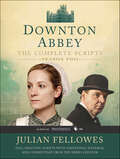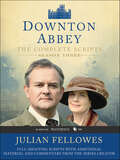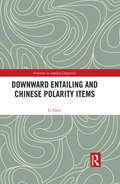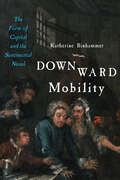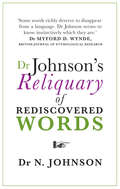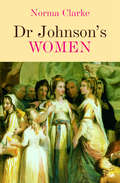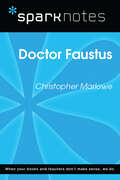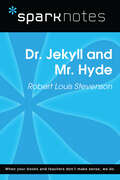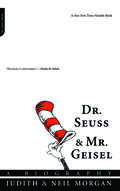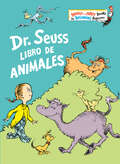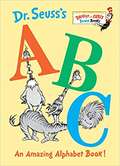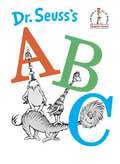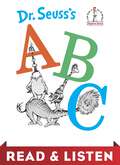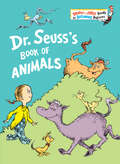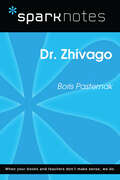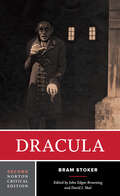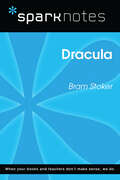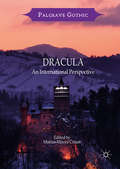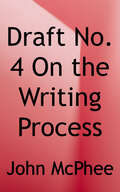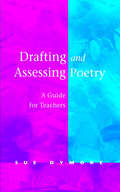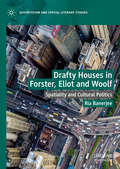- Table View
- List View
Down on the Ranch
by Aleksey Ivanov Ellen LeighThe fun and excitement of English and Language Arts learning continues in Grade 2 of Reading Street. This comprehensive and dynamic curriculum for homeschooling is geared toward young children who have some foundational English and Language Arts knowledge and are ready to strengthen their skills. Comprised of engaging activities, challenging content and weekly quizzes, Reading Street: Grade 2 is the next step in your child's path toward becoming a lifelong learner and reader. As with all Reading Street products, the Grade 2 system is formatted to help students meet certain age-appropriate goals. After completing this English and Language Arts homeschool program, your child should be able to: Read and comprehend two-syllable words. Identify common prefixes (such as pre-, un-, or re-) and suffixes (such as -able, -ad and -er). Correct mistakes made when reading out loud. Read books with two or more chapters. Understand the structure of stores (i. e. beginning, middle and end). Start selecting reading materials based on his/her own interests. Identify the "who," "what," "when," "where," "why" and "how" of the text. While the goals of second Grade English and Language Arts are numerous, Reading Street will help you craft engrossing lessons. Your child will garner important English and Language Arts skills while completing a workbook, reading stories and poems, and taking assessments. Planning these lessons will be easier than ever, as all Reading Street systems are broken down into weekly Big Ideas. All the work your child does on a given week is formulated around that single concept for an organized and challenging curriculum. With six easy-to-follow units, Reading Street: Grade 2 is the perfect tool for homeschooling parents. Your child will enjoy the reading selections and activities, and you'll love to see your student growing into a knowledgeable individual. We're confident that this product is the right one for you. For more information on the specific materials found in Grade 2 of Reading Street, check out the Features and Benefits page.
Downton Abbey Script Book Season 1: The Complete Scripts (Downton Abbey Ser. #1)
by Julian FellowesFull shooting scripts with commentary from creator Julian Fellowes highlighting key historical and dramatic details. Includes previously unseen material. The most successful British television drama of our time, the multi-award-winning Downton Abbey has become a national phenomenon in the U.S. as well. Created by Julian Fellowes—who received an Academy Award for his screenplay for the acclaimed Robert Altman motion picture, Gosford Park—Downton Abbey features stellar performances, ravishing sets and costumes, and, most importantly, absolutely riveting plots. Now the scripts for the entire first season have been collected in one volume, along with never before seen material, incisive commentary, and color photos that will completely immerse fans in the world of Downton Abbey.Praise for Downton Abbey“A deft balance of emotion, suspense and comedy.” —Daily Telegraph“The sets and costumes are ravishing, the attention to detail painstaking and the performances are brilliant. But above all, it’s a cracking story.” —The Times (London)\“There is no mystery about the potency of this series, slathered in wit, powered by storytelling of a high order.” —The Wall Street Journal“A sumptuous, accomplished piece of television.” —The Guardian (UK)
Downton Abbey Script Book Season 2: The Complete Scripts (Downton Abbey Ser. #2)
by Julian FellowesThe full scripts of award-winning Downton Abbey, season two including previously unseen commentary from Julian FellowesOpening in 1916, as the First World War rages across Europe, Season Two is the next dramatic installment of the much-loved, award-winning drama. The Crawley family and their servants play their parts on the front line and back at home as their lives are intensified by the strains of war.The shooting scripts give a fascinating view of how Julian Fellowes weaves his storylines of love, loss, and betrayal to captivate the audience. With key insights into the research and creative processes, this will appeal to fans and students alike.
Downton Abbey Script Book Season 3: The Complete Scripts (Downton Abbey Ser. #3)
by Julian FellowesEngross yourself in Julian Fellowes’ multi-award winning drama with the full script of Season Three, which includes previously unseen dialogue and drama as well as two 8-page color photo inserts.Downton Abbey fever is stronger than ever!The most successful British drama of our time continues to captivate viewers with its riveting storylines, stunning costumes, and unforgettable performances by its cast. With Downton Abbey’s script from Season Three—which was the most dramatic yet—fans can go behind-the-scenes to learn all of the secrets.Offering readers the opportunity to read the work in more detail and study the characters, pace and themes in depth, the scripts include an introduction, exclusive commentary, full color photos, and additional material from Julian Fellowes. Readers will be given invaluable insight into how Fellowes researched and crafted the amazing world of Downton Abbey.A must for lovers of Downtown Abbey, the scripts will enhance viewers’ experience with the award-winning show that continues to enchant its audience.
Downward Entailing and Chinese Polarity Items (Frontiers in Applied Linguistics)
by Li ChenPolarity phenomena are pervasively observed in natural languages. Previous studies on Chinese polarity items are mainly in line with the non-veridicality approach. This book, however, employs the downward-entailing hypothesis as its analytical foundation, and argues that downward entailment is the only licensor for different kinds of Chinese polarity items, and non-veridicality is neither a necessary nor sufficient condition and thus offers inferior explanatory power compared with the former. To begin with, it lays the groundwork for this research by presenting a brief introduction to polarity phenomena and reviewing the existing relevant theories. Then it addresses the status of the commonly used element dou in Chinese. Specifically, it applies the tripartite structural frame to the studies of dou, and examines the role of dou in licensing the polarity items. Moreover, it investigates the properties and behavior of dou with respect to modality. Based on the analysis above, it observes that non-interrogative wh-indeterminates in Chinese can be licensed in the restriction domain of a necessity operator. Also, the non-uniformity of three Chinese polarity items, i.e., shenme, na-CL, and renhe, is scrutinized within the downward-entailing framework. This book will appeal to scholars, teachers and students in the field of linguistics, especially in the areas of formal semantics and generative grammar. Researchers and engineers in cloud computing and big data who are seeking help from linguistic contributions to meaning and logic will also benefit from it.
Downward Mobility: The Form of Capital and the Sentimental Novel
by Katherine BinhammerHow do the stories we tell about money shape our economies?Beginning in the late eighteenth century, as constant growth became the economic norm throughout Europe, fictional stories involving money were overwhelmingly about loss. Novel after novel tells the tale of bankruptcy and financial failure, of people losing everything and ending up in debtor's prison, of inheritances lost and daughters left orphaned and poor. In Downward Mobility, Katherine Binhammer argues that these stories of ruin are not simple tales about the losers of capitalism but narratives that help manage speculation of capital's inevitable collapse.Bringing together contemporary critical finance studies with eighteenth-century literary history, Binhammer demonstrates the centrality of the myth of downward mobility to the cultural history of capitalism—and to the emergence of the novel in Britain. Deftly weaving economic history and formal analysis, Binhammer reveals how capitalism requires the novel's complex techniques to render infinite economic growth imaginable. She also explains why the novel's signature formal developments owe their narrative dynamics to the contradictions within capital's form. Combining new archival research on the history of debt with original readings of sentimental novels, including Frances Burney's Cecilia and Camilla, Sarah Fielding's David Simple, and Oliver Goldsmith's The Vicar of Wakefield, Downward Mobility registers the value of literary narrative in interpreting the complex sequences behind financial capitalism, especially the belief in infinite growth that has led to current environmental crises. An audacious epilogue arms humanists with the argument that, in order to save the planet from unsustainable growth, we need to read more novels.
Dr Johnson's Reliquary of Rediscovered Words
by Dr Neil JohnsonIn these pages you will discover words you never knew existed, and rediscover many that you had forgotten or had given up all hope of ever seeing again.If the amoindering of our language by fifish chuffs leads you to fleer and the infandous overslipping of orthoepy makes you feel wamble, this is most certainly the book for you.Prepare to fike, gane and gaure as Dr Johnson certiorates, carrying carotic catachresis to new heights, and providing all lovers of leguleian lexicographical detail with a rich feast of mullock, cultch and peltry.
Dr Johnson's Women
by Norma ClarkeDr Johnson's friendships with the leading women writers of the day was an important feature of his life and theirs. He was willing to treat women as intellectual equals and to promote their careers: something ignored by his main biographer, James Boswell. Dr Johnson's Women investigates the lives and writings of six leading female authors Johnson knew well: Elizabeth Carter, Charlotte Lennox, Elizabeth Montagu, Hester Thrale, Hannah More and Fanny Burney. It explores their relationships with Johnson, with each other and with the world of letters. It shows what it was like to be a woman writer in the 'Age of Johnson'. It is often assumed that women writers in the eighteenth century suffered the same restrictions and obstacles that confronted their Victorian successors. Norma Clarke shows that this was by no means the case. Highlighting the opportunities available to women of talent in the eighteenth century, Dr Johnson's Women makes clear just how impressive and varied their achievements were.
Dr. Faustus (SparkNotes Literature Guide Series)
by SparkNotesDr. Faustus (SparkNotes Literature Guide) by Christopher Marlowe Making the reading experience fun! Created by Harvard students for students everywhere, SparkNotes is a new breed of study guide: smarter, better, faster.Geared to what today's students need to know, SparkNotes provides:chapter-by-chapter analysis explanations of key themes, motifs, and symbols a review quiz and essay topics Lively and accessible, these guides are perfect for late-night studying and writing papers.
Dr. Jekyll and Mr. Hyde (SparkNotes Literature Guide Series)
by SparkNotesDr. Jekyll and Mr. Hyde (SparkNotes Literature Guide) by Robert Louis Stevenson Making the reading experience fun! Created by Harvard students for students everywhere, SparkNotes is a new breed of study guide: smarter, better, faster.Geared to what today's students need to know, SparkNotes provides:chapter-by-chapter analysis explanations of key themes, motifs, and symbols a review quiz and essay topics Lively and accessible, these guides are perfect for late-night studying and writing papers.
Dr. Johnson and Mr. Savage
by Richard Holmes"Dr. Johnson & Mr. Savage" recounts a story of a mysterious eighteenth-century friendship between Richard Savage -- poet, playwright, and convicted murderer -- and the young Samuel Johnson, an unknown provincial schoolmaster just arrived in London to seek his literary fortune. Holmes shows how the bond between Savage and Johnson revolutionized the art of biography.
Dr. Seuss & Mr. Geisel: A Biography
by Judith Morgan Neil MorganHorton, Thidwick, Yertle, the Lorax, the Grinch, Sneetches, and the Cat in the Hat are just a handful of the bizarre and beloved characters Theodor S. Geisel (1904#150;1991), alias Dr. Seuss, created in his forty-seven children's books, from 1937's And to Think That I Saw It on Mulberry Street to 1990's Oh, the Places You'll Go! During his lifetime Dr. Seuss was honored with numerous degrees, three Academy Awards, and a Pulitzer, but the man himself remained a reclusive enigma. In this first and only biography of the good doctor, the authors, his close friends for almost thirty years, have drawn on their firsthand insights as well as his voluminous papers; the result is an illuminating, intimate portrait of a dreamer who saw the world "through the wrong end of a telescope," and invited us to enjoy the view.
Dr. Seuss Libro de animales (Bright & Early Books(R))
by Dr. SeussUn libro fácil de leer sobre animales, reales e imaginarios, ilustrado por Dr. Seuss. Con un reparto de animales reales y criaturas seussianas, este texto sobre animales, sencillo y rimado, es un excelente libro de conceptos básicos, además de ser una introducción al mundo de Dr. Seuss. Ilustrado con dibujos de algunos de los más apreciados libros de Dr. Seuss, entre ellos, Un Pez Dos Peces Pez Rojo Pez Azul, ¡El señor Brown hace Muuu! ¿Podrías hacerlo tú? y Horton cuida el nido, les enseñará a los lectores principiantes a identificar los animales que forman parte del mundo que los rodea ¡y también los que solo se encuentran en los clásicos de Dr. Seuss! Historias breves, divertidas, con pocas palabras, fáciles de leer, de un ritmo alegre y vívidas ilustraciones, los libros de la colección Bright and Early Books son ideales para desarrollar el amor por la lectura en los niños.Las ediciones rimadas y en español de los clásicos de Dr. Seuss publicadas por Random House brindan la maravillosa oportunidad de disfrutar de sus historias a más de treinta y ocho millones de personas hispanohablantes en Estados Unidos. Los lectores podrán divertirse con las ediciones en español de The Cat in the Hat (El Gato Ensombrerado); Green Eggs and Ham (Huevos verdes con jamón); One Fish Two Fish Red Fish Blue Fish (Un pez, dos peces, pez rojo, pez azul); The Lorax (El Lórax); Oh, the Places You'll Go! (¡Oh, cuán lejos llegarás!); How the Grinch Stole Christmas! (¡Cómo el Grinch robó la Navidad!), y Horton Hears a Who! (¡Horton escucha a Quién!). Ideal tanto para leer en casa como en la escuela, estos libros han sido meticulosamente traducidos, respetando la rima, por autores y traductores latinoamericanos, y supervisados por Teresa Mlawer, reconocida y galardonada traductora durante más de cincuenta años.A rhymed Spanish easy reader about animals--real and imaginary--with illustrations by Dr. Seuss! Featuring a mix of real animals and Seussian creatures, this super-simple rhymed riff about animals is both a concept book and a funny introduction to the world of Dr. Seuss. Illustrated with art from beloved Dr. Seuss books--including One Fish Two Fish Red Fish Blue Fish, Mr. Brown Can Moo! Can You?, and Horton Hatches the Egg--it teaches beginning readers to identify animals in the world around them and ones only found in classic books by Dr. Seuss! Nurture a love of reading--and of animals--with this great new concept book for beginning readers! Combining brief and funny stories, easy words, catchy rhythm, and lively illustrations, Bright and Early Books are an ideal way to introduce the joys of reading to children.Random House's rhymed Spanish-language editions of classic Dr. Seuss books make the joyful experience of reading Dr. Seuss books available for the more than 38 million people in the United States who speak Spanish. Readers can enjoy over 30 different classic Dr. Seuss titles including The Cat in the Hat (El Gato Ensombrerado); Green Eggs and Ham (Huevos verdes con jamón); One Fish Two Fish Red Fish Blue Fish (Un pez dos peces pez rojo pez azul); The Lorax (El Lórax); Oh, the Places You'll Go! (¡Oh, cuán lejos llegarás!); How the Grinch Stole Christmas! (¡Cómo el Grinch robó la Navidad!); and Horton Hears a Who! (¡Horton escucha a Quién!). Perfect for home and classroom use, they are meticulously translated in rhyme by native Latin American Spanish-speakers overseen by award-winning translator Teresa Mlawer.
Dr. Seuss's ABC (Beginner Books(R))
by Dr. SeussArguably the most entertaining alphabet book ever written, this classic Beginner Book by Dr. Seuss is perfect for children learning their ABCs. Featuring a fantastic cast of zany characters—from Aunt Annie&’s alligator to the Zizzer-Zazzer-Zuzz, with a lazy lion licking a lollipop and an ostrich oiling an orange owl—Dr. Seuss&’s ABC is a must-have for every young child&’s library. Originally created by Dr. Seuss, Beginner Books encourage children to read all by themselves, with simple words and illustrations that give clues to their meaning.
Dr. Seuss's ABC: Read & Listen Edition (Beginner Books(R))
by Dr. SeussArguably the most entertaining alphabet book ever written, this classic Beginner Book by Dr. Seuss is perfect for children learning their ABCs. Featuring a fantastic cast of zany characters—from Aunt Annie&’s alligator to the Zizzer-Zazzer-Zuzz, with a lazy lion licking a lollipop and an ostrich oiling an orange owl—Dr. Seuss&’s ABC is a must-have for every young child&’s library.Originally created by Dr. Seuss, Beginner Books encourage children to read all by themselves, with simple words and illustrations that give clues to their meaning.This Read & Listen edition contains audio narration.
Dr. Seuss's Book of Animals (Bright & Early Books)
by Dr. SeussAn easy reader about animals—real and imaginary—with illustrations by Dr. Seuss!Featuring a mix of real animals and Seussian creatures, this super-simple rhymed riff about animals is both a concept book AND a funny introduction to the world of Dr. Seuss. Illustrated with art from beloved Dr. Seuss books—including One Fish Two Fish Red Fish Blue Fish,Mr. Brown Can Moo! Can You?, and Dr. Seuss's ABC—it teaches beginning readers to identify animals in the world around them and ones only found in classic books by Dr. Seuss! Nurture a love of reading—and of Seussian creatures—with this great new concept book for beginning readers!Bright and Early Books are perfect for beginning beginner readers! Launched by Dr. Seuss in 1968 with The Foot Book, Bright and Early Books use fewer and easier words than Beginner Books. Readers just starting to recognize words and sound out letters will love these short books with colorful illustrations.
Dr. Zhivago (SparkNotes Literature Guide Series)
by SparkNotesDr. Zhivago (SparkNotes Literature Guide) by Boris Pasternak Making the reading experience fun! Created by Harvard students for students everywhere, SparkNotes is a new breed of study guide: smarter, better, faster.Geared to what today's students need to know, SparkNotes provides:chapter-by-chapter analysis explanations of key themes, motifs, and symbols a review quiz and essay topics Lively and accessible, these guides are perfect for late-night studying and writing papers.
Dracula (Norton Critical Editions #0)
by Bram Stoker“In Dracula, we find a monster who takes away our agency, our choice—even as he consumes us. The fantasy of becoming a vampire is a myth of exceptionalism— nobody fantasizes about being the random peasant whom the titular Count devours. Instead, people are thrilled by the thought of turning into vampires themselves—becoming the most powerful consumer, the apex predator. And until we recognize that we have far more in common with prey than predator, we will always feel the vampire's pull. I hope Norton's vital new addition to the conversation about Stoker’s work will cause readers to look at this old story with new eyes: to question our preconceptions and refocus our own narrative lenses. Dracula remains evergreen, I'm afraid—because within our monsters... we may find ourselves.” —Kate Hamill (playwright/actor) This Norton Critical Edition includes: The first edition of the novel, published by Archibald Constable in London in 1897 and chosen by the editors in order to give readers—insofar as such a thing is possible—a more historically authentic reading experience than has been generally available. Arcane words and usages are footnoted at first appearance. Editorial matter by John Edgar Browning and David J. Skal. Eight background pieces, five of them new to the Second Edition, on Count Dracula specifically and vampires more generally; seven reviews and reactions to Dracula’s publication, five of them new to the Second Edition; and six selections, two of them new to and two others updated for the Second Edition, on Dracula’s many dramatic and filmic variations. Eleven critical essays on Dracula’s central themes, six of them new to the Second Edition. A selected bibliography. About the Series? Read by more than 12 million students over fifty-five years, Norton Critical Editions set the standard for apparatus that is right for undergraduate readers. The three-part format—annotated text, contexts, and criticism—helps students to better understand, analyze, and appreciate the literature, while opening a wide range of teaching possibilities for instructors. Whether in print or in digital format, Norton Critical Editions provide all the resources students need.? “The notes in Dracula are exactly at the right level for students. The headnotes are extremely helpful. It really does [meet the needs of today's students]. It is my favorite NCE to teach.” —Carrie D. Shanafelt, Fairleigh Dickinson University
Dracula (SparkNotes Literature Guide Series)
by SparkNotesDracula (SparkNotes Literature Guide) by Bram Stoker Making the reading experience fun! Created by Harvard students for students everywhere, SparkNotes is a new breed of study guide: smarter, better, faster.Geared to what today's students need to know, SparkNotes provides:chapter-by-chapter analysis explanations of key themes, motifs, and symbols a review quiz and essay topics Lively and accessible, these guides are perfect for late-night studying and writing papers.
Dracula: An International Perspective (Palgrave Gothic)
by Marius-Mircea CrişanThis volume analyses the role of Bram Stoker’s Dracula and its sequels in the evolution of the Gothic. As well as the transformation of the Gothic location—from castles, cemeteries and churches to the modern urban gothic—this volume explores the evolution of the undead considering a range of media from the 19th century protagonist to sympathetic contemporary vampires of teen Gothic. Based on an interdisciplinary approach (literature, tourism, and film), the book argues that the development of the Dracula myth is the result of complex international influences and cultural interactions. Offering a multifarious perspective, this volume is a reference work that will be useful to both academic and general readers.
Draft No. 4: On the Writing Process
by John McPheeDraft No. 4 is a master class on the writer's craft. In a series of playful, expertly wrought essays, John McPhee shares insights he has gathered over his career and has refined while teaching at Princeton University, where he has nurtured some of the most esteemed writers of recent decades. McPhee offers definitive guidance in the decisions regarding arrangement, diction, and tone that shape nonfiction pieces, and he presents extracts from his work, subjecting them to wry scrutiny. In one essay, he considers the delicate art of getting sources to tell you what they might not otherwise reveal. In another, he discusses how to use flashback to place a bear encounter in a travel narrative while observing that "readers are not supposed to notice the structure. It is meant to be about as visible as someone's bones." The result is a vivid depiction of the writing process, from reporting to drafting to revising--and revising, and revising. Draft No. 4 is enriched by multiple diagrams and by personal anecdotes and charming reflections on the life of a writer. McPhee describes his enduring relationships with The New Yorker and Farrar, Straus and Giroux, and recalls his early years at Time magazine. Throughout, Draft No. 4 is enlivened by his keen sense of writing as a way of being in the world.
Drafting and Assessing Poetry: A Guide for Teachers
by Sue Dymoke`This excellent book provides the reader with comprehensive coverage of all aspect of poetry teaching. The book does more than inform us - it inspires profound reflection on the best ways it support poetry writing and draws us into the debate about assessment-driven curriculum' - School Librarian `A must for trainee teachers and English departments' - Booktrusted News `Drafting and Assessing Poetry is thoroughly researched and shows how attitudes towards teaching of poetry and indeed the place of poetry on the syllabus, has changed with political fashion over the years, but more importantly, Sue Dymoke shows how a handful of contemporary poets go about drafting their work and sees this process as an essential tool in the classroom, advocating that students should keep drafting notebooks, just like real writers. Getting students, or indeed members of writing groups, to understand that one draft of a poem may not be the final or best work they can produce will never be a problem again!' - Writing in Education `Sue Dymoke's book is a much needed antidote to the ubiquitous guides to poetry analysis.... This book is well worth reading for its clarity and wealth of ideas' - Bethan Marshall, TES Teacher Magazine `Every English department should buy this remarkably comprehensive book. Inspiring approaches for teaching children to write poetry are clearly described. Sue Dymoke draws upon her extensive experience as a poet, English teacher and researcher to explore the place of writing poetry in English lessons and examinations. Her unique insights into both the writing and teaching of poetry should prove invaluable to English teachers' - Dr Mark Pike, Lecturer in English Education and Head of PGCE English, University of Leeds `It is a useful book: a theoretical text, but with a practical focus, which makes it very readable and interesting, to teachers of young people particularly, but also, to teachers of adults and indeed in parts to poetry writers themselves, particularly those interested in working in schools, or simply curious about the general process of drafting and evaluating poetry' - County Lit, Nottinghamshire County Council Literature Newsletter Drafting and Assessing Poetry offers a range of teaching strategies for developing students' poetry writing skills, and guidance about assessment approaches. Critical commentaries combine with illustrations of successful classroom practice to consider this essential but under-explored aspect of English teaching. Based on theory but with a practical dimension, the book engages readers in current critical debates about poetry teaching and its place in an assessment- driven curriculum. This book is for reflective practitioners, including trainee teachers, who want to develop their understanding of poetry teaching and to gain insights, which will inform classroom practice. It will also be useful for literacy co-ordinators, teacher educators and other advisory staff in the field of English teaching.
Drafty Houses in Forster, Eliot and Woolf: Spatiality and Cultural Politics (Geocriticism and Spatial Literary Studies)
by Ria BanerjeeThis book argues that E. M. Forster, T. S. Eliot, and Virginia Woolf engaged sustainedly with real and imagined places as sites of counter-cultural politics. These writers used architectural images in diaries, essays, novels, poems, and plays to express their dissatisfaction with imperial London: from the glorification of war to the erosion of local religious and linguistic traditions, and rigidly gendered practices in domestic and public life. Drafty Houses shows that each author experienced post-war modernity as intimate spatial dislocation—in Egypt (Forster), in the church (Eliot), or in London’s museums and streets (Woolf)—and traces connections between their personal experiences and lesser read publications to theorize about the impact of places on their writerly perspectives. By closely examining each author's negotiation of space symbolic of Englishness, empire, and global politics, Drafty Houses considers the limitsand the open-ended possibilities of liberal humanism, Christian conservatism, and feminist pacifism.

